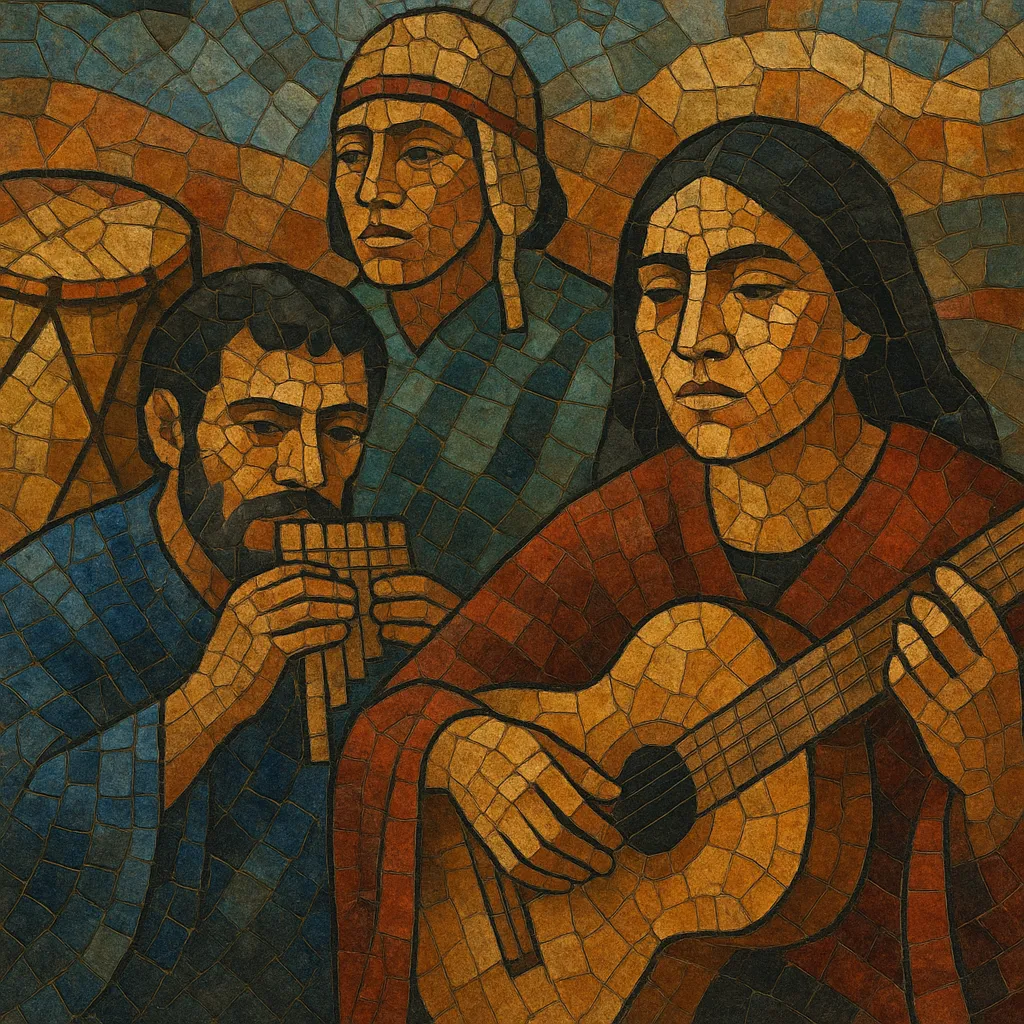Nueva canción chilena is a socially engaged song movement that arose in Chile in the 1960s, blending traditional Chilean and Andean folk idioms with contemporary, often left-leaning political and poetic lyrics.
Musically it draws on cueca, tonada, huayno, and carnavalito grooves and timbres, foregrounding acoustic textures such as charango, quena, zampoña, guitar, and bombo legüero. Vocals are central—solo or choral—with clear, story-driven delivery. The result is a repertoire that feels both rooted in the rural and indigenous past and urgently modern in its message.
Beyond its aesthetics, the genre functioned as a cultural movement: it organized peñas (folk venues), independent labels, and collective ensembles to channel popular demands for social justice, workers’ rights, and national identity. Its songs became anthems of solidarity across Latin America and the world.
Nueva canción chilena coalesced around the work of Violeta Parra, who revitalized and documented Chile’s folk traditions while writing original songs of striking lyrical depth. In Santiago, peñas (folk venues) such as the Peña de los Parra became hubs where artists, students, and activists gathered. The movement emphasized national and Andean instruments, collective performance, and poetry that addressed social realities.
By the late 1960s, ensembles like Quilapayún and Inti‑Illimani, and singer‑songwriters such as Víctor Jara and Patricio Manns, brought the style to national and international audiences. Independent labels and cultural organizations helped professionalize the scene, while songs became closely associated with grassroots organizing, trade unions, and the Unidad Popular coalition. During Salvador Allende’s presidency (1970–1973), nueva canción served as a musical vanguard of hope, solidarity, and social transformation.
The 1973 military coup brutally repressed the movement—Víctor Jara was murdered, and many artists were imprisoned, censored, or driven into exile. From abroad, groups such as Inti‑Illimani and Quilapayún continued to tour, recording anthems of resistance that kept the repertoire alive and connected Chile’s struggle to global solidarity networks.
Inside Chile, a younger generation’s “canto nuevo” carried the torch under dictatorship, and after the return to democracy the original artists and their heirs reestablished the music in public life. Internationally, nueva canción chilena shaped the vocabulary of Latin American protest song, influenced rock en español and Latin alternative songwriting, and remains a touchstone for socially committed music worldwide.


